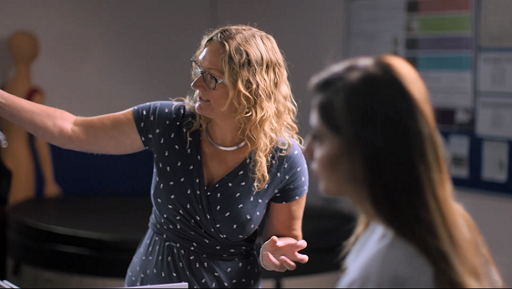3 Breast biomechanics
Now that you know the anatomy of the breast you can start to understand how a breast moves when participating in different activities. With limited internal support and the skin as the only external support the breasts move when the body moves, whether it's walking, running, cycling or dancing, and breasts move most when the activity is high impact, like running and jumping. Each breast itself is, on average, about half a kilogram, and movement of the breast mass during exercise can cause the skin to stretch beyond its natural elastic range and cause permanent damage. Wearing a good fitting sports bra can reduce breast movement by up to 74% when compared to a bare breasted condition (Norris et al., 2021).
Activity 2 How do breasts move during exercise?
Watch the video which shows the science used by the Research Group in Breast Health at Portsmouth University to establish the exact movement of the breast during exercise. Then answer the following questions:
- What are the three types of breast movement?
- Which exercise elicits movement in all three dimensions?
- What are some of the negative effects of not wearing the right level of support?

Transcript
[LAUGHTER]
[MUSIC PLAYING]
Discussion
- In the video Professor Wakefield-Scurr explains how the breast moves in three dimensions: forwards and backwards, side to side and up and down.
- Performing a star jump can cause the breast to move in all three dimensions throughout the movement.
- Performing exercise without the correct support can cause stretching of up to 93% in the breast as well as causing damage to the ligaments that hold up the breast (Cooper’s ligaments).
The way the breast moves and the implications of different movements on the breast can influence the type of support that is required. In the next section you’ll look at the implications of not meeting these requirements for support during sport and exercise.

